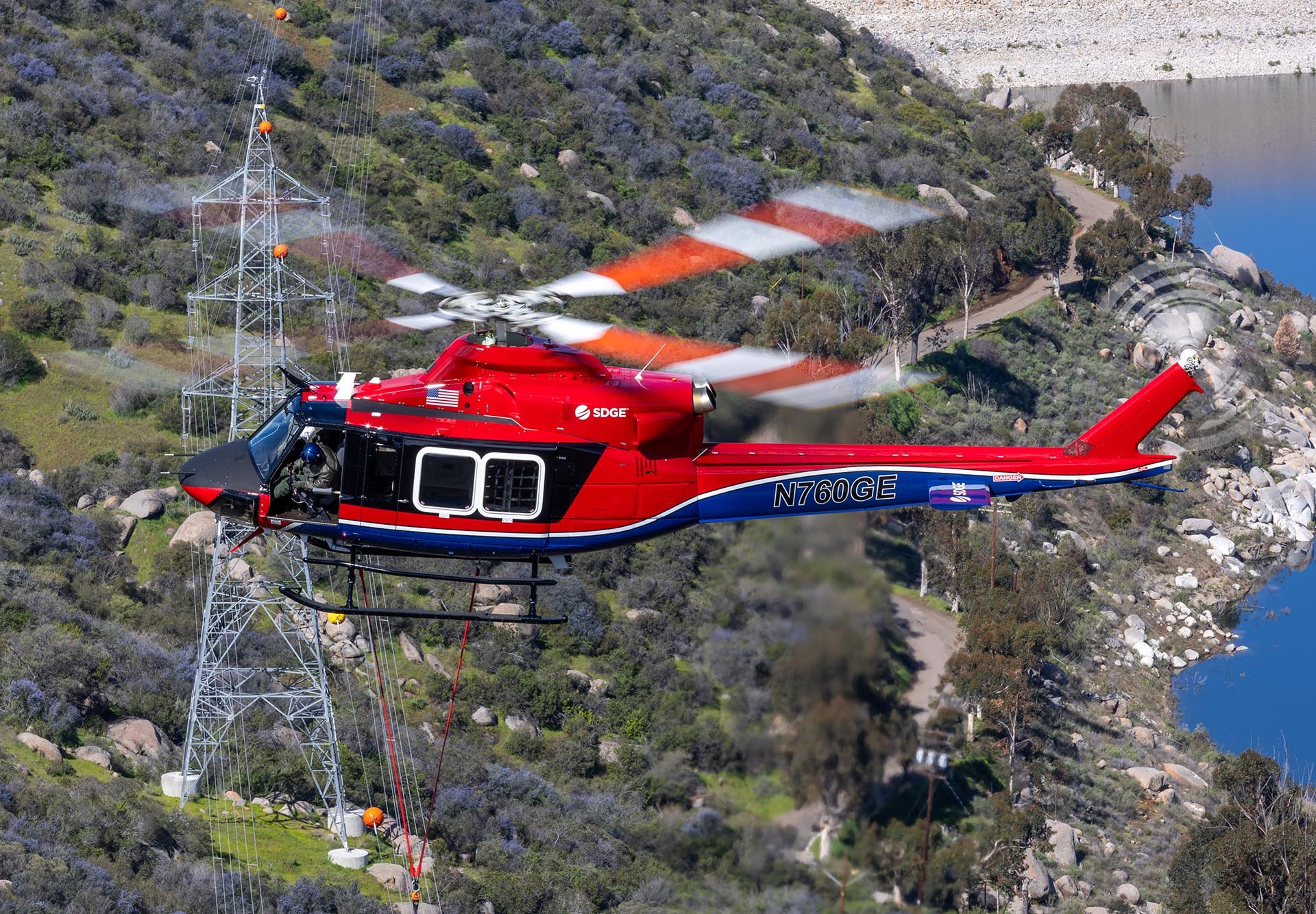San Diego Gas & Electric (SDG&E) recently put a new Bell 412EPX into service, with the next-gen’ variant of the proven 412 line plugging a gap in capability between the company’s H145 and S70/UH60 Blackhawk aircraft.
Filling a Niche
Doug Collier is SDG&E’s Aviation Operations Advisor, responsible for training and coordinating with the company’s linemen that work with helicopters. He explained that the addition of the Bell 412EPX was intended to provide a more efficient medium-lift capability to SDG&E’s fleet. “We’ve seen that the ’Crane has become our go-to type-1 firefighting heavy. It drops a lot of water and CAL FIRE loves it, so it’s first out of the door. When we brought the Blackhawk in, it wasn’t quite as popular for firefighting, but we had a lot of projects going on that needed a heavy-lift capability less than the ’Crane but more than anything else we had.”
Collier said that for medium-lift work exceeding the capability of the smaller H145, the expense of bringing in “call-when-needed aircraft” becomes excessive, so SDG&E sought an aircraft to fulfil both the medium-lift and safe HEC (human external cargo) roles.
Because the Blackhawk is predominantly committed to firefighting, the 412 will be able to conduct around 90 percent of all typically requested utility work while the UH60 is out of the picture. For the last fifteen years SDG&E has been strengthening the overhead infrastructure in its high-risk fire territories, replacing old wooden poles with new, taller, more robust steel poles. According to Tom Fries, Head of Aviation for SDG&E, “Most of that is in pretty austere, high-altitude locations, and during the summer we’re pushing the limitations of the H145.”
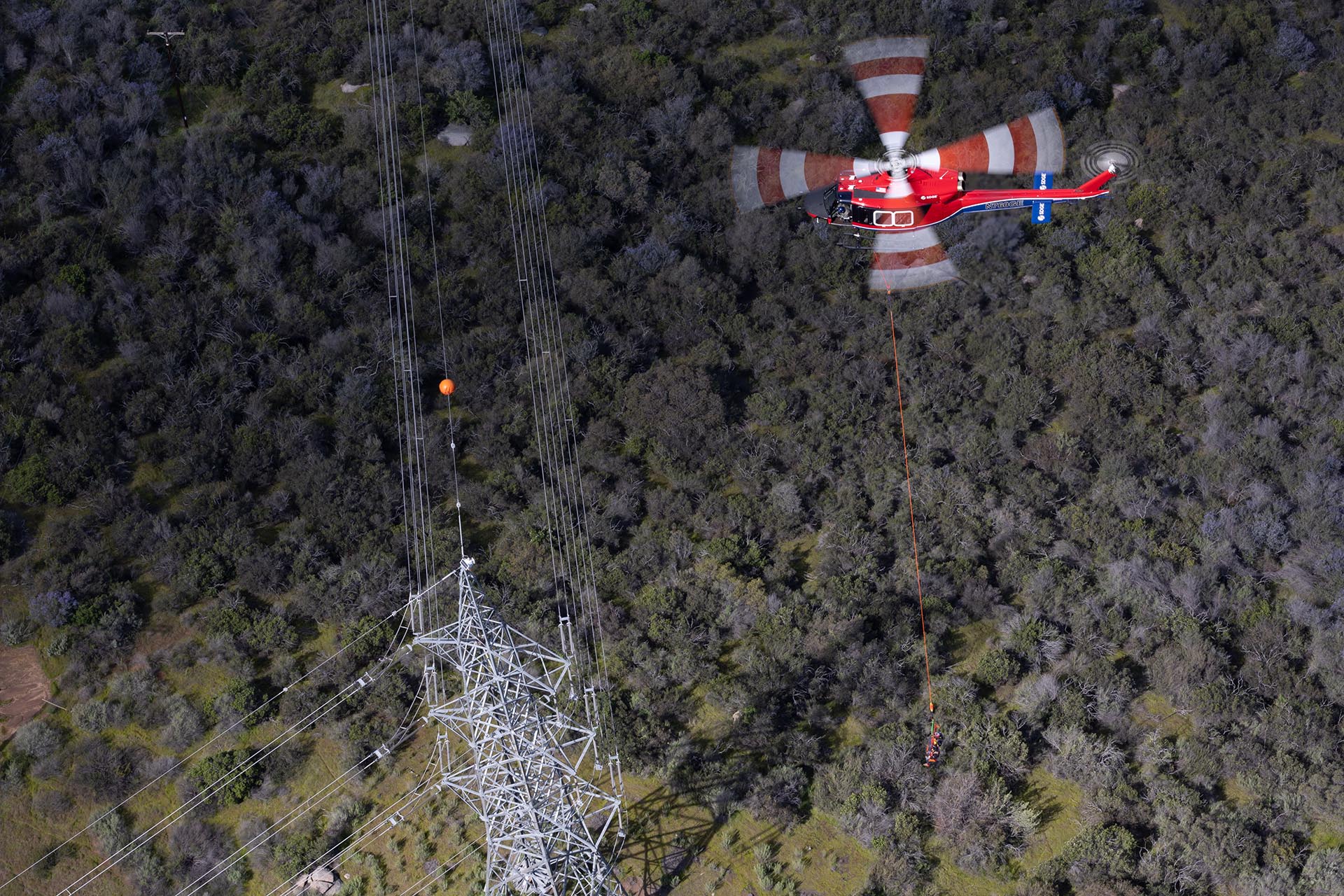
Criteria
The team considered all the company’s operational and safety criteria, envisaged how long the aircraft would remain in service and eventually chose the 412EPX as the best option. Fries chipped in, “As a utility company, we want to invest in next-generation aircraft. We wanted the redundancy and OEI performance, especially for HEC work and we brought the same considerations to the table for the 412. Additionally, parts supply is going to become a factor for some of the legacy types like the 205 and 212, so the 412EPX presented the answer to all our needs and requirements for that medium-lift helicopter.” He added that because the predicted work for the new machine included, not just lifting materials, but also human cargo, safety and single-engine performance were highest on the list of desired attributes. Fries recounted that an early HEC mission was at one of the highest points in the coverage area and HEC could not be conducted under the restricted-category Blackhawks, while the density altitude meant the H145 was not able to lift the necessary weight for the required materials. “The 412 though, meets both needs so we could accomplish both missions with that one aircraft.”
Bell’s published performance data showed that the EPX boasted a distinct advantage over earlier 412 variants and an additional deciding factor was the early availability of the particular EPX example that SDG&E eventually took delivery of. “We saw that shortened timeline and we had this aircraft within a year. If we were doing this today, things might be different but while there is a cost consideration, we’re looking to have this aircraft in service for the next twenty to thirty years. By getting the newest version, we get those years of service and will still retain some residual value in the aircraft,” noted Collier. He acknowledged that having one of the first EPXs in utility service does come with a downside, though. There are STCs to obtain, certain equipment requirements that may or may not yet be available and a much smaller pool of type-familiar maintenance personnel. None of those issues are insurmountable, however. Completion was carried out by Hangar-1, who added a Technisonic TDFM 9000 radio, mission radios, integrated sat-phone, rear intercom boxes, USB interfaces for iPads and the HEC boost hook. It was sitting on the ramp by mid-January this year at an empty weight of around 7,900lbs.
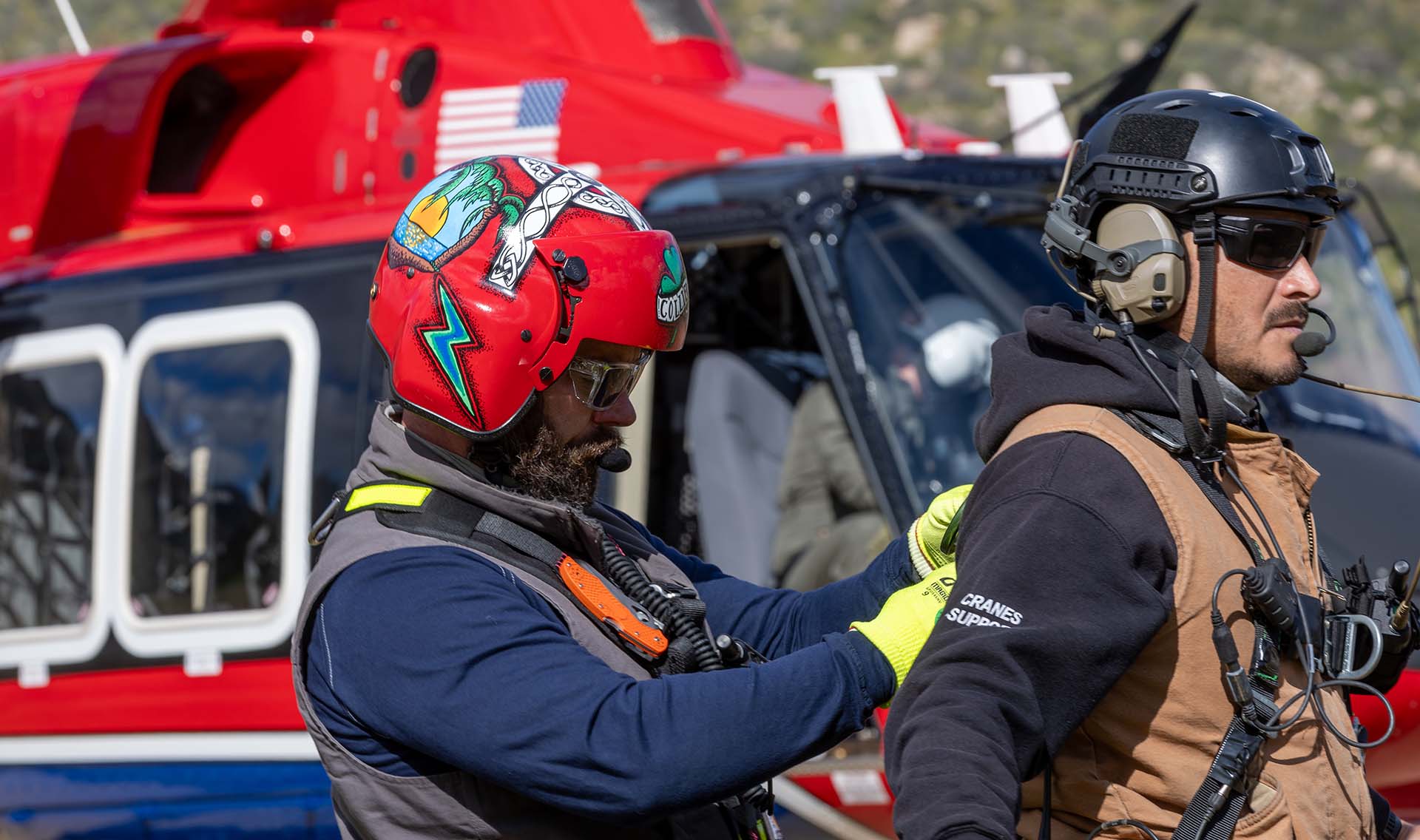
Long service life
Collier advised that it is the company’s intention to see a twenty-to-thirty-year service life from all its helicopters. Although SDG&E purchased the 412, like all their other machines it is operated for them by HeliStream Inc., with that company providing pilots and aircraft management/maintenance services. Michael Larch is Assistant Chief Pilot for HeliStream and admits to having an initial impression that the 412EPX was not the ideal choice for the mission. Having gained around 120hrs flight experience in it though, he is nothing but impressed at how stable it is, particularly for HEC work. The EPX boasts a full glass cockpit with Garmin 750s and a four-axis autopilot, late generation technology that adds to its safety, pilot friendliness and upgradability.
Much of the flying to date in the 412 has been training, but there has also been patrolling and instrument flying – to get used to the
autopilot function and display reading. “Once you’re in it, you’re good. It’s pretty solid,” Larch commented, “but you have to keep current.
You cannot just walk away for months and then just hop in and shoot an IFR approach.” For such reasons, HeliStream cross-trains its pilots
so there is always someone type-rated and familiar with the aircraft who can fill an empty slot. Larch likens some of the Bell’s flying
characteristics to the H145, commenting, “The fully articulated four-bladed rotor system definitely speaks when you fly the machine. Similar
to the H145, you cannot over-control it, you learn to back up and let the machine do its thing with only small control adjustments.”
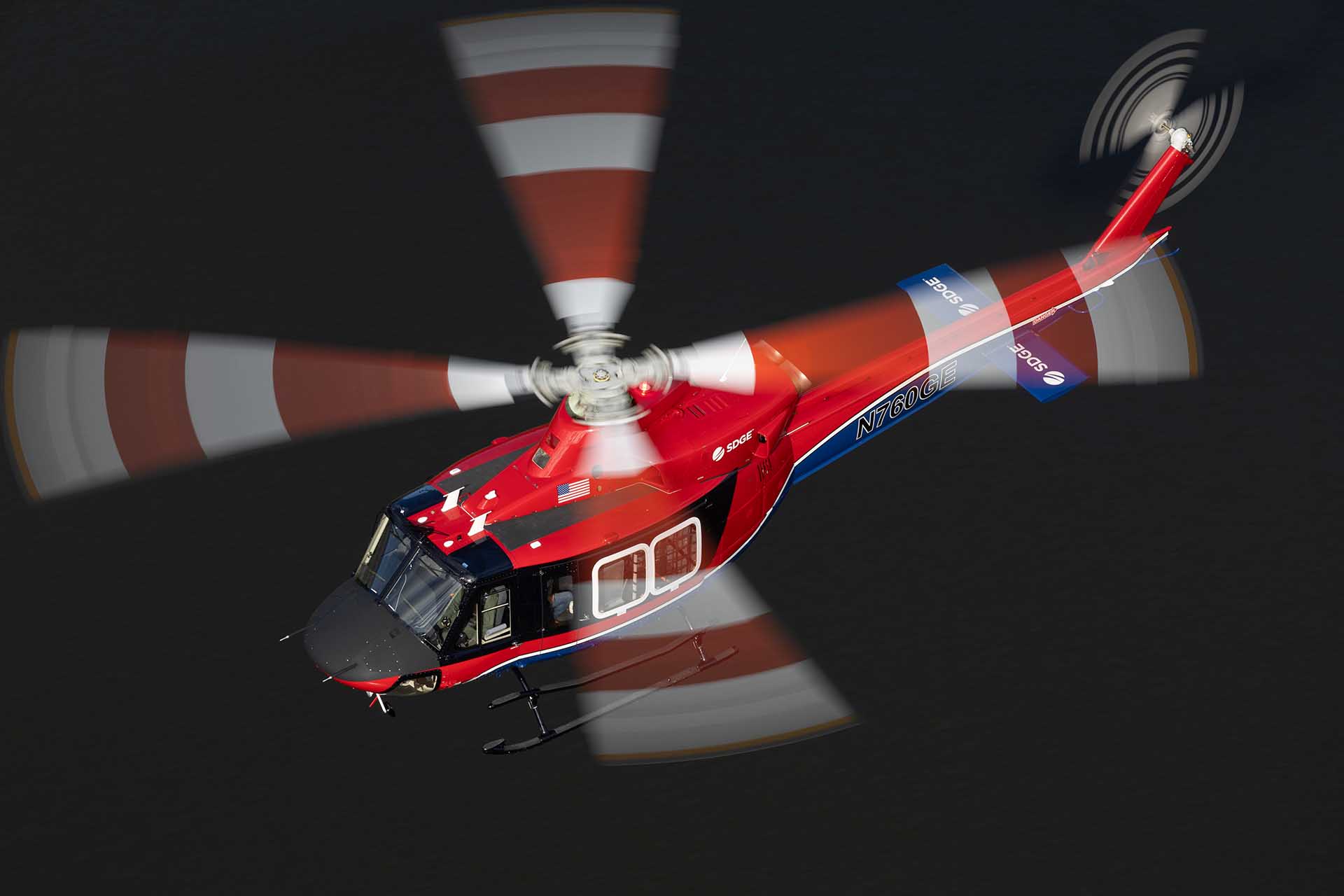
Stability
Larch described the 412’s downwash as relatively turbulent and admitted that he was therefore surprised at how stable the line was the first time they attached a weighted 25ft longline. “Then we put the bucket on and found out you have to be careful to not over-gross it, because it’ll easily pull way past the legal max’ weight limit. The 420 bucket carries 3,000lbs plus its own weight, so it comfortably pulls 4,000lbs,” he noted. That capability is the principal advantage over the H145’s 2,200-2,400lb maximum, as remote construction jobs can include equipment transfers for 4,000lb wet water-buffalos, 3,500lb compressors and the heavier ridge-top poles. It is also planned that the EPX will be equipped with a hoist in future, further expanding its mission capability. That will not be an immediate addition though, as experience with the successful introduction of the HEC program demonstrated the wisdom of progressing in a careful, considered and systematic manner, using the best training the industry has to offer. “We’re very fortunate to have Tom here as an aviation leader, with the support of his leadership, and so like-minded with regard to safety and training,” Larch opined, with Collier and Fries echoing that opinion in reverse, stating how fortunate SDG&E is to have expressing their gratitude for HeliStream’s as its exclusive use operator expertise.
“It was a lengthy process to finally get approval in 2020 to operate our own helicopters on HEC missions,” Fries related, adding that it was a firm policy that in-house HEC operations are only conducted under a twin-engine helicopter. Larch added that the H145 and 412EPX both boasted genuine climb and fly-away performance on one engine, vastly enhancing safety over that offered by less powerful twins. Before actual HEC missions commence with the 412, the construction crews will all be introduced to the helicopter, familiarized with its specific characteristics and then re-introduced to all the safety procedures and equipment carried on external load missions. Only then are they formally trained on HEC work underneath the 412 and if they do not engage in a HEC mission within 180 days of the refresher training, it will lapse and re-training will be required.
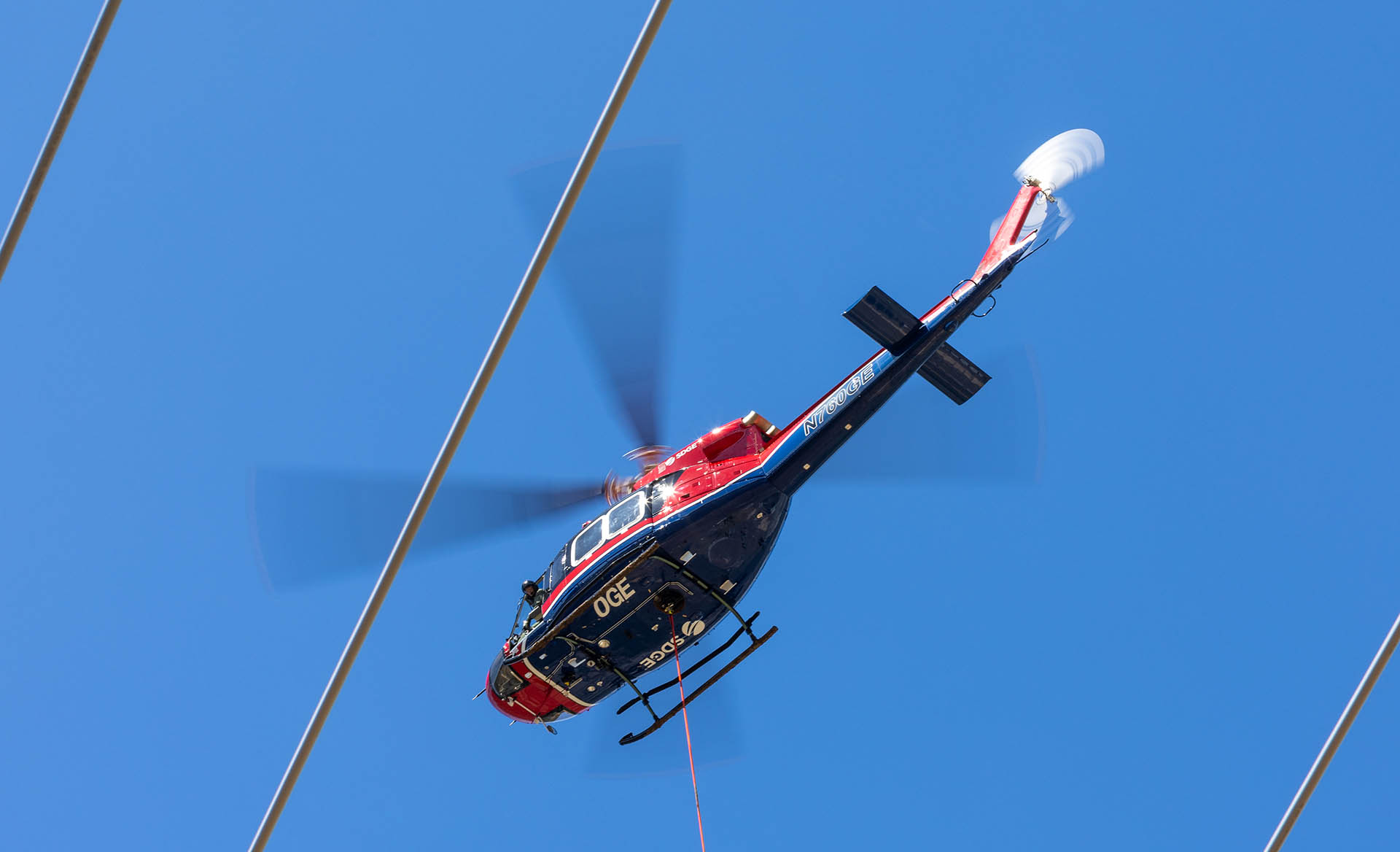
Push to multi-engine
SDG&E has long been at the forefront of the utility industry’s push towards twin-engine operations for safety and Collier admitted that SDG&E is well-positioned to invest in that initiative. “There is a cost associated with owning these larger, twin-engine aircraft, but we need that extra safety margin, especially when doing human external cargo,” he stressed. The overall cost to SDG&E can be offset to a significant degree by virtue of the firefighting capability the fleet brings. Although the 412 is a significant investment, it is a utility asset that can eliminate a lot of very expensive short-term on-demand contracts, including the benefits of increased capability and efficiency of the larger, more modern twins.
There is currently no intention to place the 412 on firefighting duty, although it has been carded for fire work, is available for callout if necessary (as is the H145) and can deploy with a 420gal Bambi Bucket in case it is deemed desirable at some future time. While the three larger types can be utilized on fires in the water-dropping role, the smaller H145 and H135 are used as Helitack platforms. Only the Blackhawk and AirCrane are sitting on the ramp, on alert under the MOU 365 days a year, while the other helicopters are available on a call-when-needed basis. Understandably, the 412’s lifting capability means that its primary function is still going to be construction work, although the SDG&E aviation team is looking to work with DART on the development of an insulator washing system for the new Bell, specifically because some of the high-voltage lines run through areas without ground access. Fries pointed out that if the system is successful, it could potentially open up the whole SDG&E infrastructure network to aerial insulator washing, provided it proves to be a more efficient method.
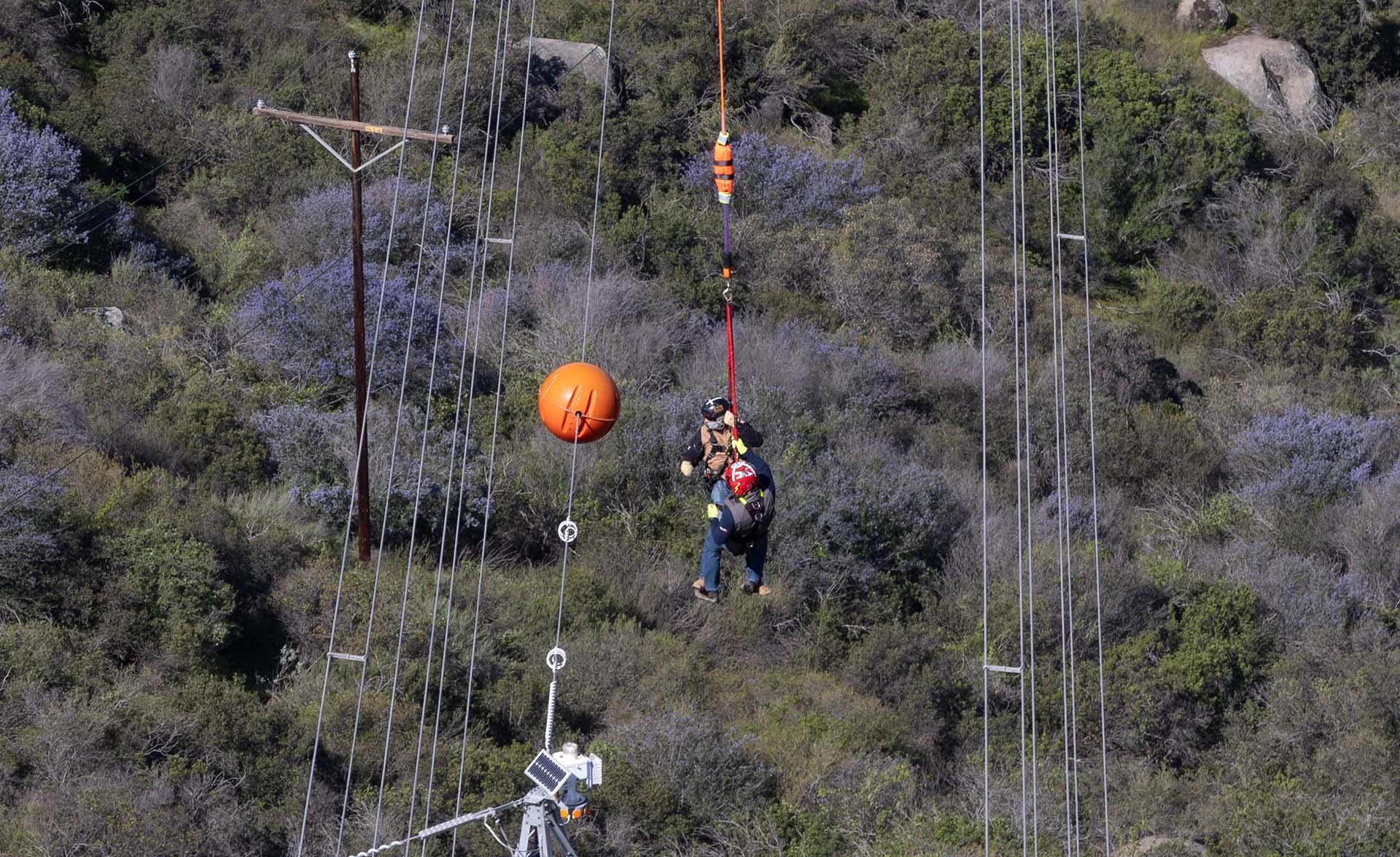
The only perceived gap in fleet coverage that he admits to now is possibly an additional H145-class machine, to cover the high demand for the existing H145 when it is out of service or down for heavy maintenance such as its two-month-long 800hr cycle inspection. A benefit of an additional H145 is that it would minimize training and maintenance requirements, due to commonality with the existing machine. “That 145 really has become the machine to turn to every time we want to do something. We’ve relieved a little of that problem with the 412, because we need that H145 for patrols and everything compliance related or regulatory related that we have to meet. So, as you can imagine, when it has to go into an 800hr we have to fall back on HeliStream’s H135. That is also an excellent machine, but it can’t do everything that the 145 can.”
The 412EPX is the end-result of sixty years of utility-focused engineering development that started with the ‘Huey’ – the original UH1N Iroquois – and Collier stressed that the prime reason for looking at a new machine in the first place was to ‘pick up heavy stuff and move it around’. Nevertheless, Fries summarized the real benefits of the EPX as all coming down to safety. “I always say to leadership that it’s not a case of if something happens, it’s a case of when something happens. We want to make sure we have the best equipment to go out and do things the right way. We mitigate every risk as best we can, with no shortcuts, and everybody understands what’s going on. Everybody knows each other and works as a team, and anybody can ask a question without any fear of criticism. Ultimately, it’s to make sure everybody goes home safely every night.”
 HOME
HOME


